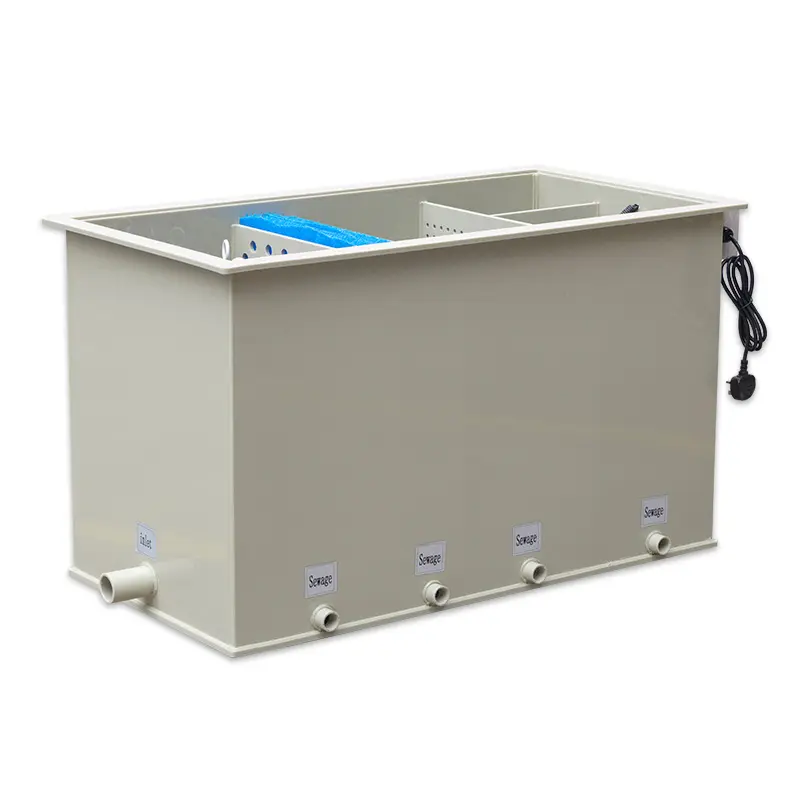Introduction to Koi Pond Health
Keeping a koi pond healthy matters a lot for looks and for the actual well being of those colorful fish. When everything's good in the pond, the koi really come alive with their bright colors and active swimming patterns, almost like underwater gems. Water quality, filtration, and fish health all work together in ways that matter more than most people realize. If the water gets bad, the fish get stressed out fast and start showing signs of trouble. Several things affect pond health including good air circulation, some plants around the edges, and definitely having decent filtration going on. The filtration part is particularly important because it keeps the water clean and clear so the whole system stays balanced and the koi stay strong and healthy. Anyone who wants their pond to thrive needs to pay special attention to these filtration systems over time.
What is Advanced Filtration?
Good filtration is really important if we want our water to stay healthy and clear in places like koi ponds. The best systems work hard at getting rid of stuff floating around in the water, from leaves and dirt to harmful chemicals and all sorts of microscopic organisms. When the water stays clean, not only does the whole pond look better, but the koi themselves tend to be healthier too. Most pond owners notice their fish just seem happier when there's proper filtration going on, which makes sense since nobody wants to live in dirty water after all.
Most koi pond filtration setups have three basic filter types working together mechanical, biological, and chemical. The mechanical ones come first, grabbing all those solid bits out of the water before they cause problems. Think skimmer baskets collecting leaves and drum filters trapping smaller stuff that floats around. Then there's the biological part, usually bead filters where good bacteria do their thing. These microbes eat up the ammonia produced by fish waste and turn it into something safer for the pond ecosystem. Chemical filters with activated carbon aren't used every day but can be handy when certain contaminants show up in the water. They help keep things clean without messing with the natural balance of the pond environment.
Adding advanced filtration tech to koi ponds brings multiple advantages worth considering. These systems do more than just make the water look clearer they actually boost how well water gets managed around the pond, which means less time spent on regular cleaning tasks. What makes them really valuable though is their impact on biological filtration processes. Better breakdown of waste materials creates a much healthier living space where koi can thrive and grow stronger over time. For anyone serious about maintaining good pond conditions, investing in quality filtration isn't just helpful it's practically essential for keeping those colorful fish happy and healthy long term.
Benefits of Advanced Filtration for Koi Health
Better filtration systems make a real difference in water quality for koi ponds, which means happier, healthier fish overall. These systems tackle those nasty stuff like ammonia and nitrites that build up over time. When these harmful chemicals get filtered out regularly, it creates much safer living conditions for the koi population. Most good quality filters will catch around 90% of the bad stuff if kept clean and running properly. Without this kind of removal process happening consistently, the pond becomes a breeding ground for all sorts of problems that stress out the fish and eventually lead to sickness among them.
Getting rid of ammonia and nitrites from the water matters a lot for koi health because if left unchecked, these chemicals can actually poison the fish pretty badly. Ammonia poisoning specifically hits their respiratory system hard, making it tough for them to breathe properly. That's why many pond keepers invest in better filtration setups. Biological filters work wonders here, turning those dangerous substances into something much safer like nitrates instead. The result? Cleaner water overall that stays safe for the fish without all the toxic stuff building up over time.
Advanced filtration does more than just cut down on toxins it also boosts oxygen levels which is really important for keeping koi healthy. When there's plenty of oxygen in the water, koi tend to eat better, grow faster, and generally stay in good shape for longer periods. Take a look at good quality aeration systems they often manage to raise dissolved oxygen content somewhere around 30 percent. This makes a big difference in creating the right conditions for fish life. The bottom line is that spending money on better pond filters pays off in the long run. Healthier fish plus a balanced ecosystem means less work for pond owners down the road.
Key Features of Advanced Filtration Systems
Advanced filtration systems for koi ponds combine mechanical and biological elements to keep the pond environment healthy. Mechanical filtration does most of the heavy lifting when it comes to trapping solid waste before it builds up and messes with water quality. Most setups include things like skimmer baskets or those big drum filters we all see at local ponds. Then there's biological filtration which relies on good bacteria to tackle nasty stuff like ammonia. These helpful microbes form part of the nitrogen cycle that's so important for keeping koi happy and healthy in their watery home.
UV filtration stands out as one of those must-have features in modern filtration systems because it really gets rid of algae problems. The system works by shining ultraviolet light on the water, killing off algae and all sorts of tiny bugs floating around. When ponds become clear again, people love how much better they look. But there's another benefit too. Cleaner water means koi fish actually have a nicer place to live without so much debris floating around them. And let's face it, nobody wants to spend hours cleaning their pond every week when they could be enjoying watching their fish swim instead.
Picking out a good filtration system starts with knowing exactly how big and deep the pond actually is. The filter needs to handle about the same amount of water that flows through it daily otherwise things get messy real quick. If someone installs something too small for their pond setup, the filter just gets overwhelmed pretty soon after installation. And when filters can't keep up,水质 goes downhill fast which nobody wants especially not if there are koi fish living there. Getting this right means spending some time measuring everything properly before heading off to buy equipment because getting it wrong costs extra money down the road plus stressed out fish don't look very nice swimming around either.
Impact on Koi Health and Longevity
Good filtration makes all the difference when it comes to keeping koi healthy and living longer. Fishkeepers know that when the water stays clean through proper filtration, the koi just seem happier overall. They swim around more actively, eat better, and generally show off those beautiful colors we love so much. Pond owners who maintain their filters regularly notice something interesting too their fish actually start interacting more with each other and exploring different parts of the pond. Research backs this up too. Koi grow faster in water that's been properly filtered because they absorb nutrients much better when there aren't all those harmful substances floating around. Clean water really does mean healthier, more vibrant fish over time.
Good filtration plays a big role in keeping koi healthy and preventing disease outbreaks in ponds. When water stays clean and properly balanced through proper filtration, koi experience less stress, which means they're less likely to get sick. Stress weakens their defenses against all sorts of problems like bacteria and other nasties that love dirty water. A pond with good filtration creates a calmer environment where koi can actually build up their natural immunity over time. This isn't just about making the pond look nice either. While aesthetics matter, what really counts is having a filtration system that works day after day to protect the fish's health and help them live longer, happier lives in their aquatic home.
Case Studies or Examples
Looking at actual transformations in koi ponds gives us a good idea of how well modern filtration systems work in practice. Take for example this small town pond where people used to complain constantly about bad water quality and lots of dead fish floating around. Before they put in those fancy new filters, the water was really dirty, oxygen levels were dangerously low, and green algae would take over almost every week. The whole place looked terrible and the koi weren't doing well at all. After installing the upgraded filtration system though, things changed dramatically. Water became clear enough to see right down to the bottom within days, and most importantly, far fewer koi died off during winter months. Local pond enthusiasts noticed the difference immediately and started talking about it at their weekend gatherings.
Looking at koi ponds before and after filtration upgrades shows just how much difference better systems can make. One particular case involved a pond that went from using old fashioned filters to something much more advanced. Before making these changes, the water would get really bad with ammonia and nitrites going up all the time, which put the koi at risk. Once they installed the new system though, those harmful substances dropped way down to almost nothing, creating much safer conditions for the fish. The water itself became noticeably cleaner too. People who visited commented on how much better everything looked underwater now that rocks and plants could be seen clearly instead of being hidden behind murky water. The whole place just felt more inviting after the upgrade.
Tips for Choosing and Maintaining Advanced Filtration
Getting the right filter for a koi pond makes all the difference when it comes to keeping the water clean and the fish happy. Think about how big the pond actually is and just how much water sits in there before making any decisions. A good idea is to go with something custom made for the particular setup rather than trying to force a one size fits all solution onto every situation. Maintenance matters too if we want those filters working properly over time. Set up some kind of regular cleaning plan so nothing gets backed up inside the system. Keep an eye on how things are running day to day. If problems pop up like slower water movement or murky looking water, chances are good that either something is blocked somewhere along the line or maybe just needs tweaking here and there. Taking care of these little issues early means fewer headaches down the road and healthier pond overall.
FAQs on Koi Pond Health
What is the main purpose of advanced filtration in koi ponds?
Advanced filtration systems are designed to maintain water clarity and health by removing debris, pollutants, and biological matter, ensuring an ideal environment for koi fish.
Why is reducing ammonia and nitrites important for koi health?
Ammonia and nitrites can cause toxic conditions in water, leading to stress and potential diseases in koi. Advanced filtration converts these harmful compounds into less harmful substances, maintaining water quality.
How does UV filtration benefit a koi pond?
UV filtration controls algae growth, improving water clarity and reducing maintenance efforts, while enhancing the pond's aesthetic and providing a healthier environment for the koi.
What factors should be considered when choosing a koi pond filtration system?
It's essential to match the filtration system's capacity with the pond's size and volume to ensure optimal performance and maintain healthy water conditions for koi fish.

